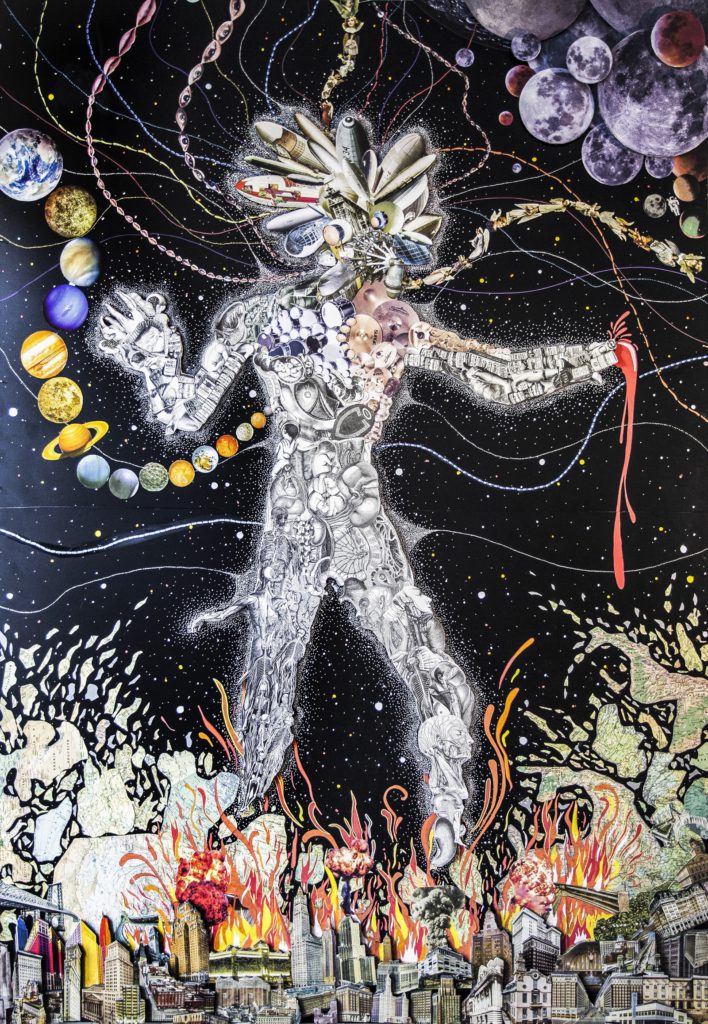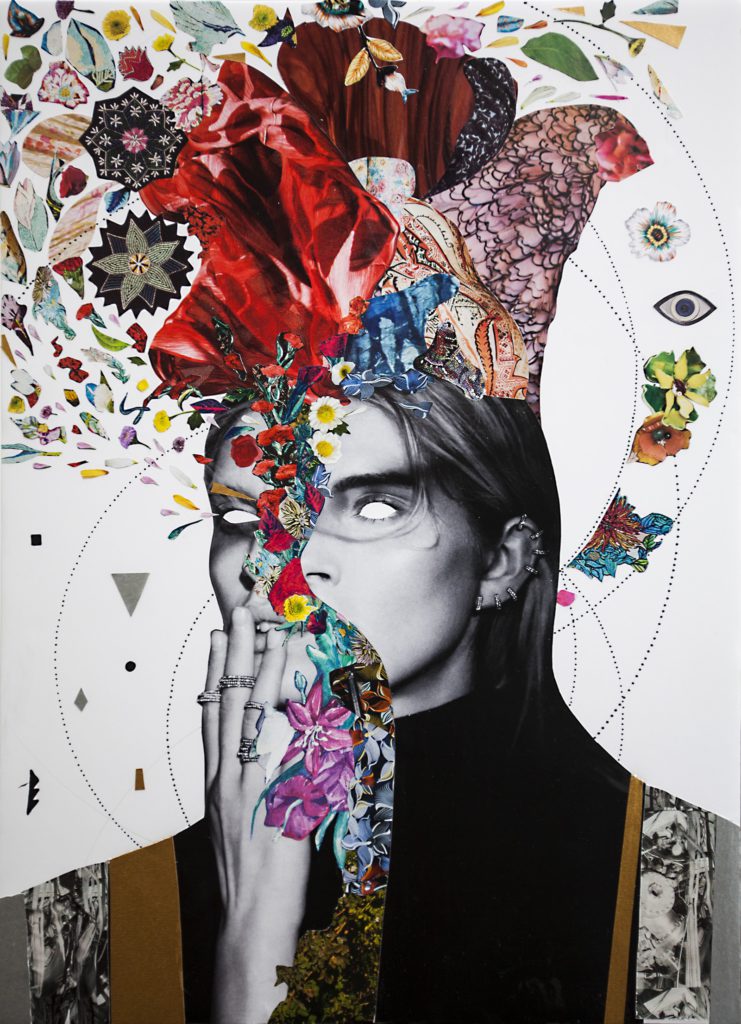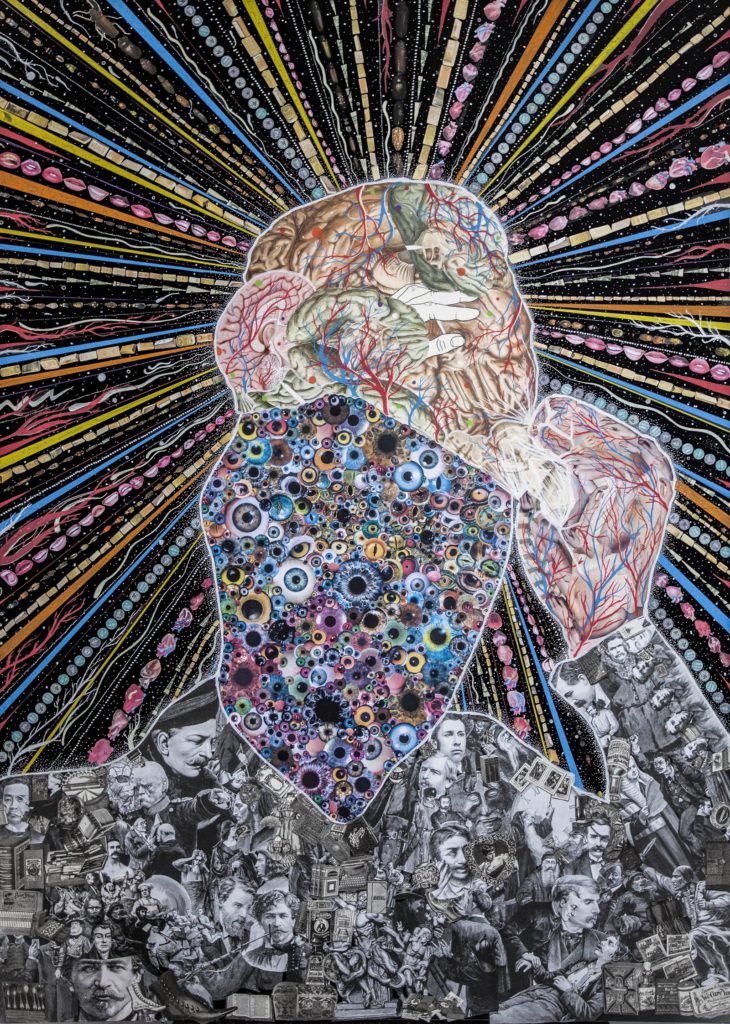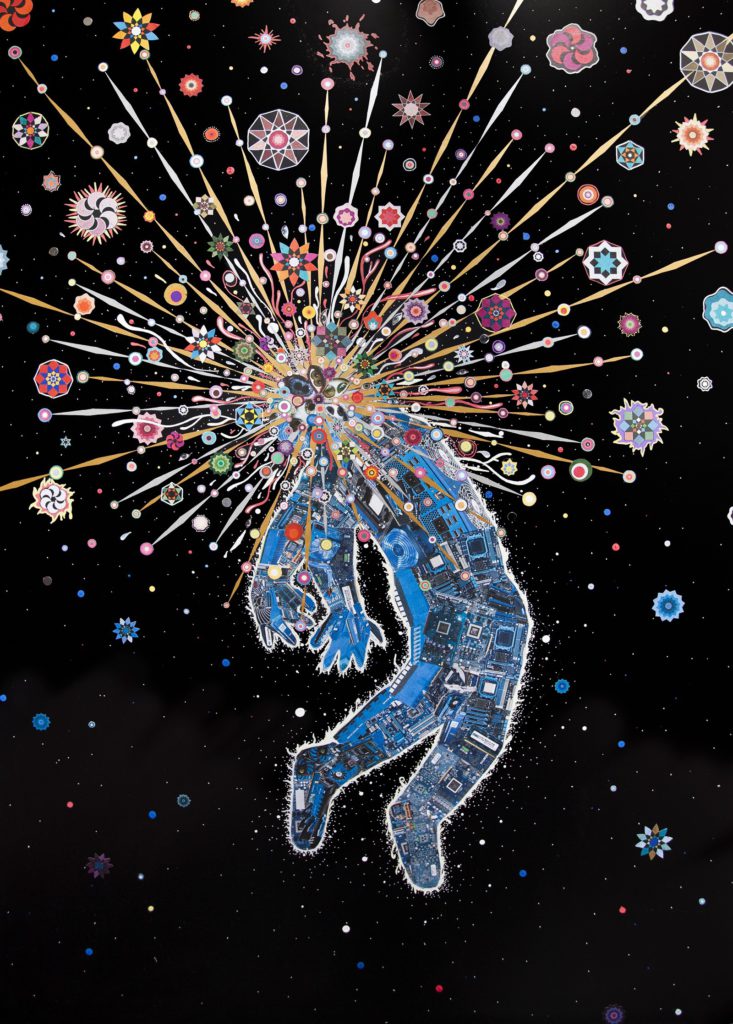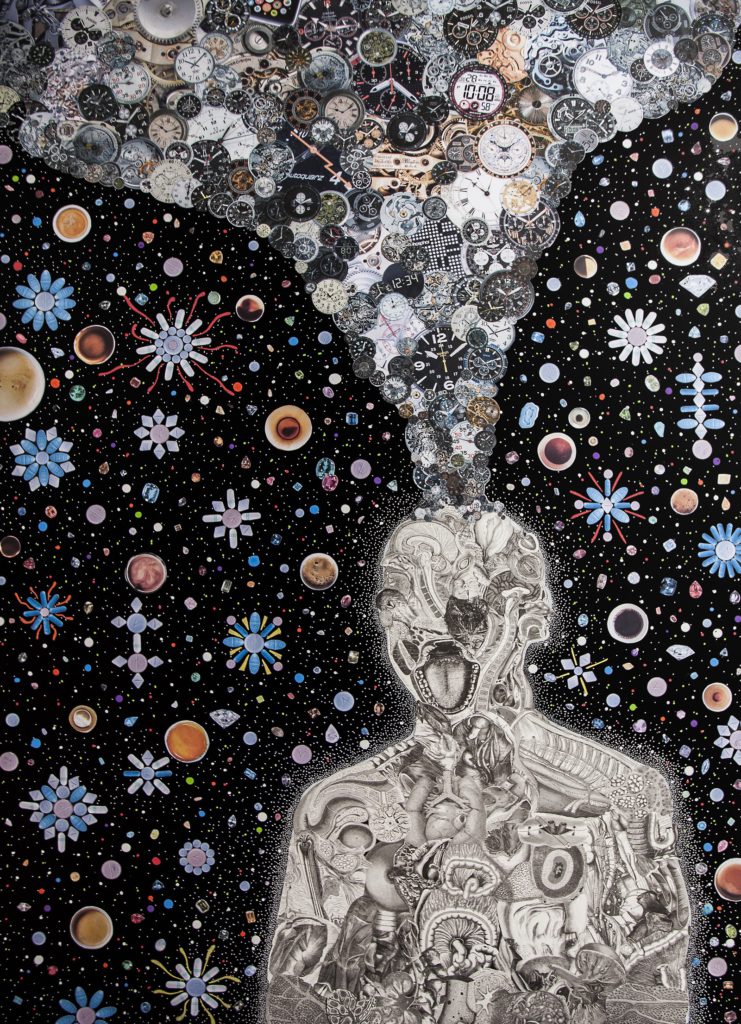

Both Kaiju Superstar and Cerebrum Crumbs are spin-offs from David Crunelle’s sinister 2014 collage series Psychedelic Constructivism. Here was a harrowing world in which tacky magazines and other detritus were cut up and reconstellated for quite nightmarish ends. Cerebrum Crumbs, a short run of postcard-sized collages in a similar vein, was David’s way of recovering from the three months spent creating that harrowing world: ‘I felt like my brains were basically dry’ he explains gruesomely. Kaiju Superstar, meanwhile, began as an attempt to produce what David calls ‘nicer’ things – material ‘less dark, polluted or tortured’ than that which comprised Psychedelic Constructivism. What went wrong?
No two ways about it: the artist has created a monster. Lots of monsters. These are kaiju: terrific, giant beasts, the like of which have been turning up in major Japanese cities since the 1930s so as to cause serious damage to property. (The US has had its problems over the years, too, with oversized gorillas and marshmallow men, not to mention a T-Rex in San Diego.) We could blame the artist, for sure, but I’m more inclined to blame most everyone else. Put it this way: these monsters are the result of working in a more accessible – dare I say popular – key.
Just look what happened. Kaiju #4 is that great beast Time, who marauds through the city from nine until five. Kaiju #5 carries a box almost as big as his gut – imagine how many things might be stuffed in there! Perhaps it’s just one massive thing! Kaiju #8 tramples all over not just the city but the whole global village. You get the idea. Some of these monsters don’t even look like monsters. They’re the scariest kind. Kaiju #2 is looking at you looking at him and tends to overthink things, as would anyone with five brains and a hundred eyes. Truly a product of our times is Kaiju #9: planes are in, as evidenced by the desire to know absolutely everything about their crashing.
I think it goes like this. We still wear that magic cap so as to make-believe there are no monsters: the trick is that we have made up plentiful scary things whose ubiquity is a sure-fire reminder that they’re made up. The market helps. As Anne Allison notes in Millennial Monsters (2006), kaiju are big business: they are ‘good to sell’, readily ‘commodifiable into collectible models’. On the one hand, then, Kaiju Superstar makes perfect sense. Kids love Godzilla. But would you give collectible models of any of David’s kaiju to your children? These are monsters created for – and by – a society tediously preoccupied with the zombie apocalypse at the expense of much more feasible end-time scenarios.
These are real monsters created for – and by – those quite unprepared for real monsters.
